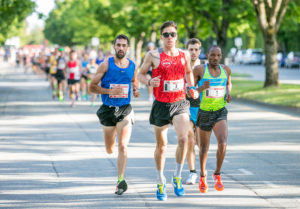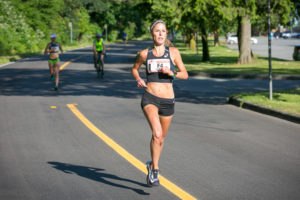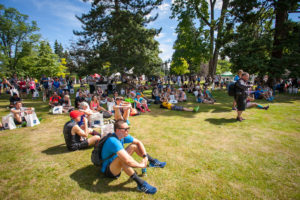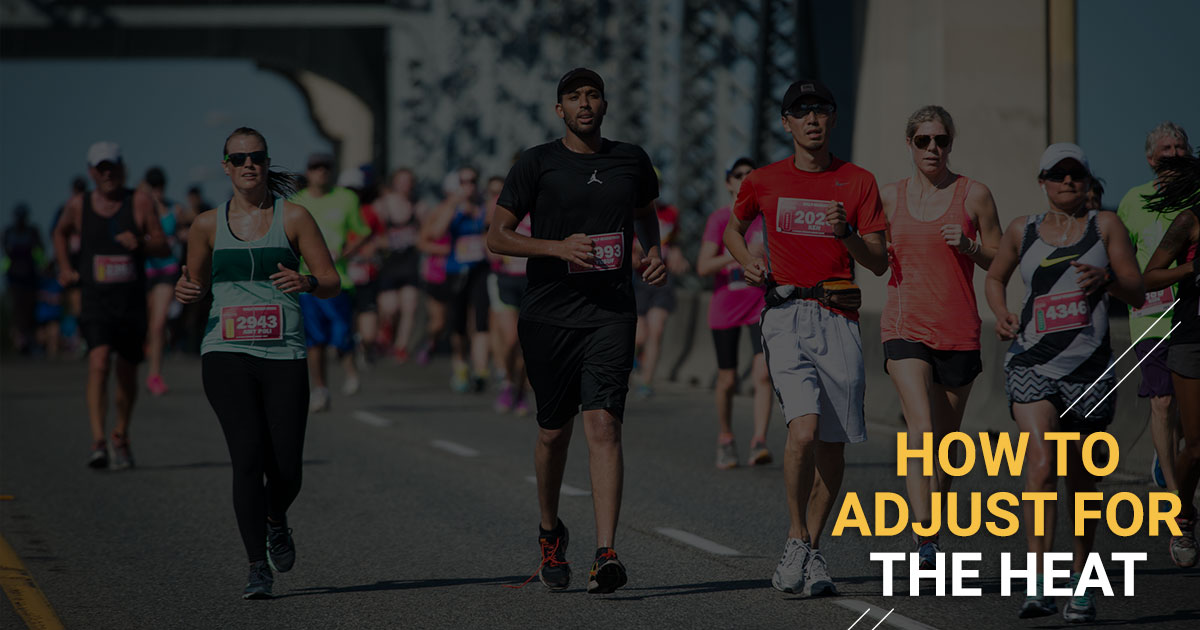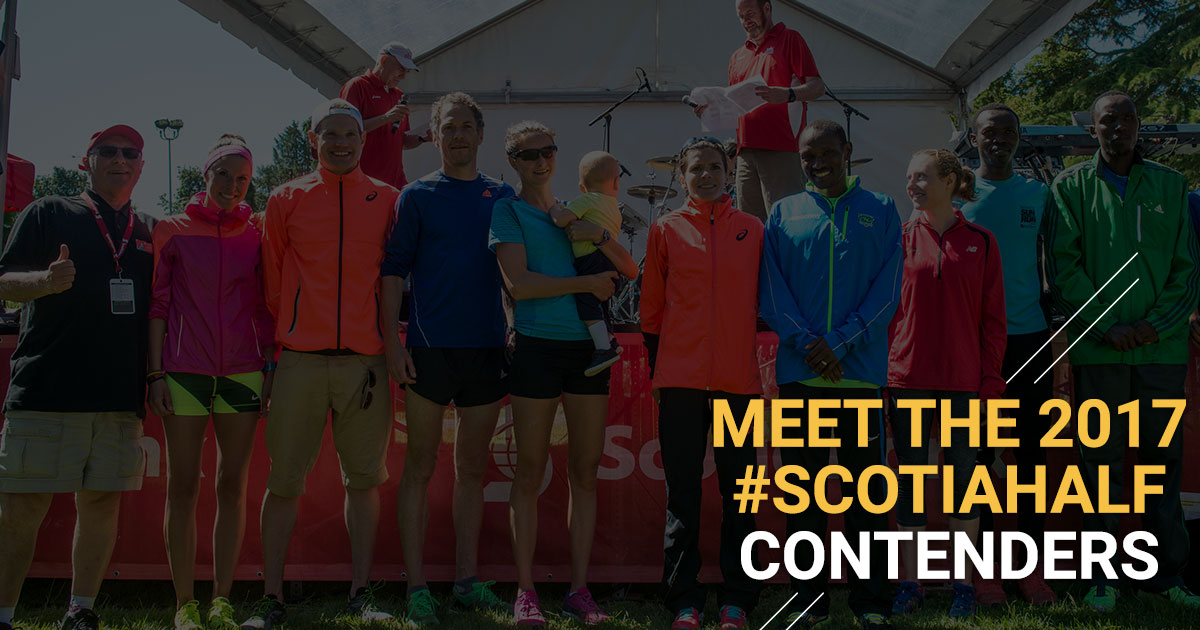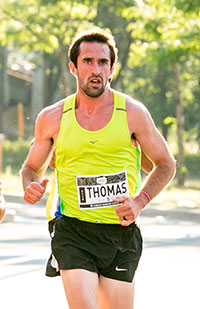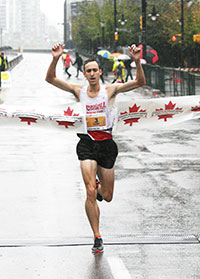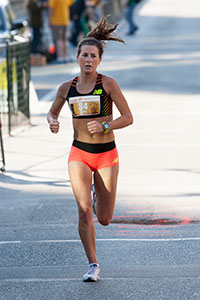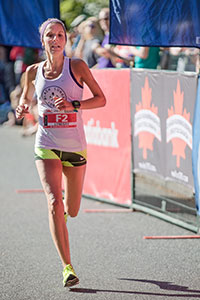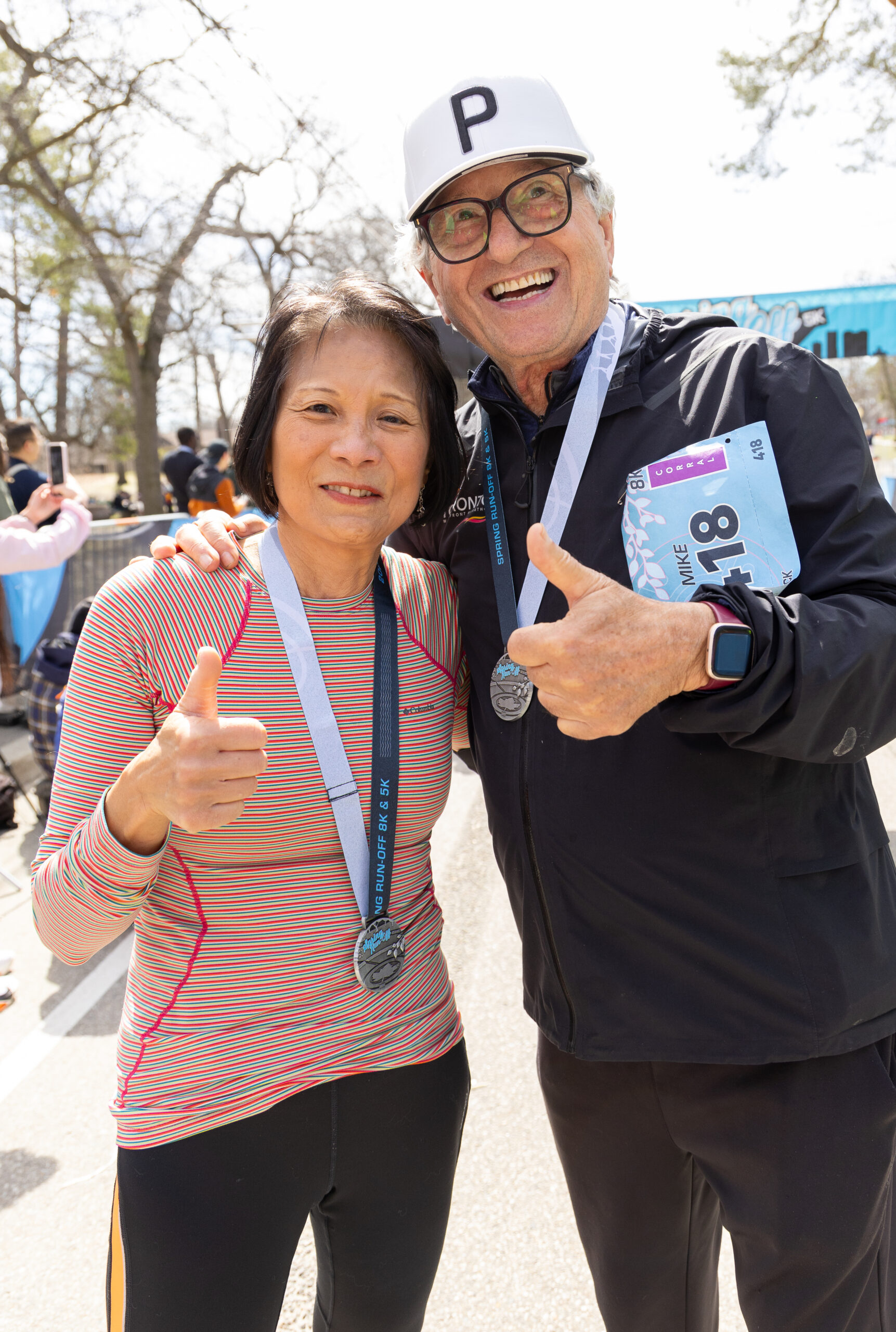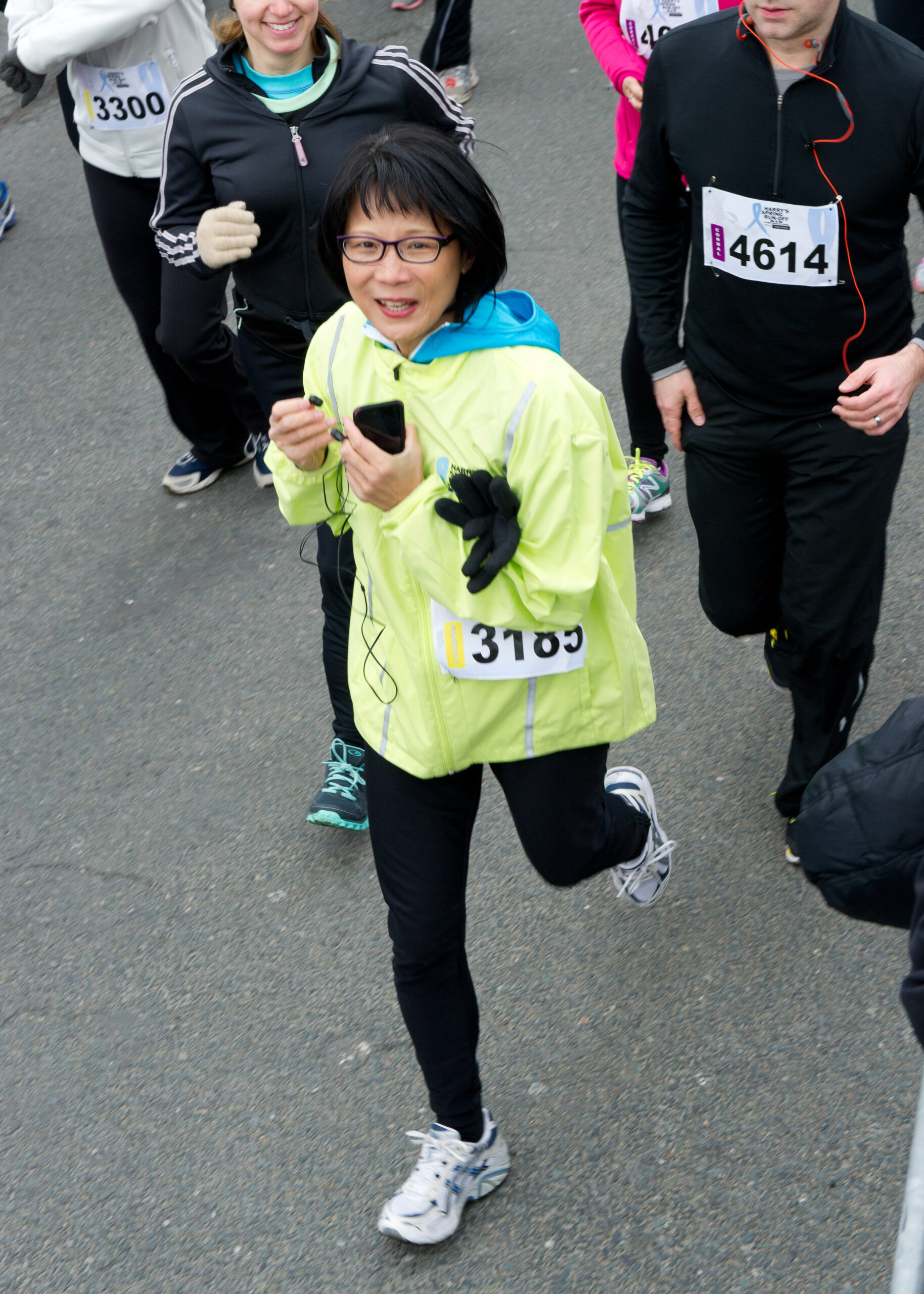Runner’s are notorious for training through injury. No matter how much this may be revered, doing this can do more damage than good. The “no pain, no gain” mentality is a mindset many athlete’s have, but is a detrimental one. There are times that training through discomfort is okay, like dealing with delayed onset muscle soreness from a previous workout. However, when the discomfort is actually painful, it’s worth second guessing your decision to train. Many injuries start with a little niggle that gets pushed aside and trained through. By not giving it a chance to heal, that niggle can escalate into pain, and then into a full-blown injury.
This is where listening to your body, and seeking professional helps comes in. Getting injured doesn’t mean you’re sidelined from everything as there are many other cross-training activities that can help to maintain fitness. Learning to train around an injury will not only help you to recover faster, it’ll keep your mind at ease.
See a doctor or sport-related practitioner to diagnose the problem, and use your own common sense and grit to keep training sensibly. These are some of the most common mistakes of training with an injury, and how to avoid it from happening to you:
MISTAKE: “No pain, no gain.”
FIX: Listen to your body.
Our bodies are incredibly resilient and are able to downplay a lot of things. We have nerve endings in our body that sense pain called nociceptors. Depending on the area of the body that’s affected, pain that may feel intense in one area, may feel minimal somewhere else. However, when any kind of pain is felt, it usually hurts for a reason and is a good indication that something is wrong. The “no pain, no gain” mentality is a recipe for disaster. When people push through these signals and continue doing the activity that causes pain, it’s not surprising that damage occurs.
So instead of trying to act like a hero, take time off from the painful activity. This will allow any damage to remain minimal and heal more efficiently. If the pain is significant or doesn’t improve after a few days of rest, consult a doctor or physiotherapist to assess the injury and determine the root cause.
MISTAKE: Consulting Dr. Google.
FIX: Consult a human professional.
Having the world’s knowledge at our fingertips can be a dangerous resource when trying to diagnose an injury. What may be the signs and symptoms of a minor muscle strain, could look like the tell-tale signs of some rare incurable disease. Unless you personally have a background in human anatomy and sports injuries, it’s best to leave the diagnosing up to the professionals.
Seek out a doctor, physiotherapist, chiropractor, or RMT who has experience with athletes and will understand your desire to get back to training as soon as possible. Not only will they help to identify the problem, they’ll give a reasonable timeline, and be more understanding in their return to health plan. Incorporating cross-training alternatives and maintenance exercises to prevent the injury from happening again, sport-specific practitioners will have you back in the game in a timely fashion.
MISTAKE: Thinking absolute rest is the answer.
FIX: Cross-train.
It’s normal to think that resting an injury is going to help it heal faster. The issue is when people rest completely, and cease any and all activity. Unless you’ve been told by a practitioner to do nothing, there will be other activities that won’t cause any pain or do further damage. Exercise, in any shape or form, helps your body recover. People’s cardiovascular health, metabolism and immune system are all influenced by exercise in a positive way.
So instead of becoming a couch potato when you’re injured, try different cross-training activities and use your extra time to do tedious physio exercises that will stave off any other injuries. Modify workouts but adjusting the intensity, only working non-injured muscles, and avoid anything that causes pain. You’ll be able to maintain fitness, gain overall strength, and keep sane during a time where you’re unable to run.
MISTAKE: Starting where you left off.
FIX: Ease back into it.
Being injured is bad enough, but it’s even harder when you’re allowed to run again but have restrictions on what you can do. Trying to jump right back into training at the level you were at pre-injury, can set you back again. While that fitness level might be the most fresh in your mind, it doesn’t mean your body is ready to do it. Start back slowly and conservatively. Avoid speedwork and hills for the first stage of recovery; don’t run on back-to-back days until you can run and have no pain before, during, or after; and increase your mileage by 10% per week. Keeping these guidelines in mind will lessen the chance of reinjury.
Don’t give up! An injury is annoying and frustrating to deal with, but it doesn’t mean you’ll never be able to run again. Seek out help, be patient, and rekindle your love for other activities; it’ll make the recovery time go by much faster!
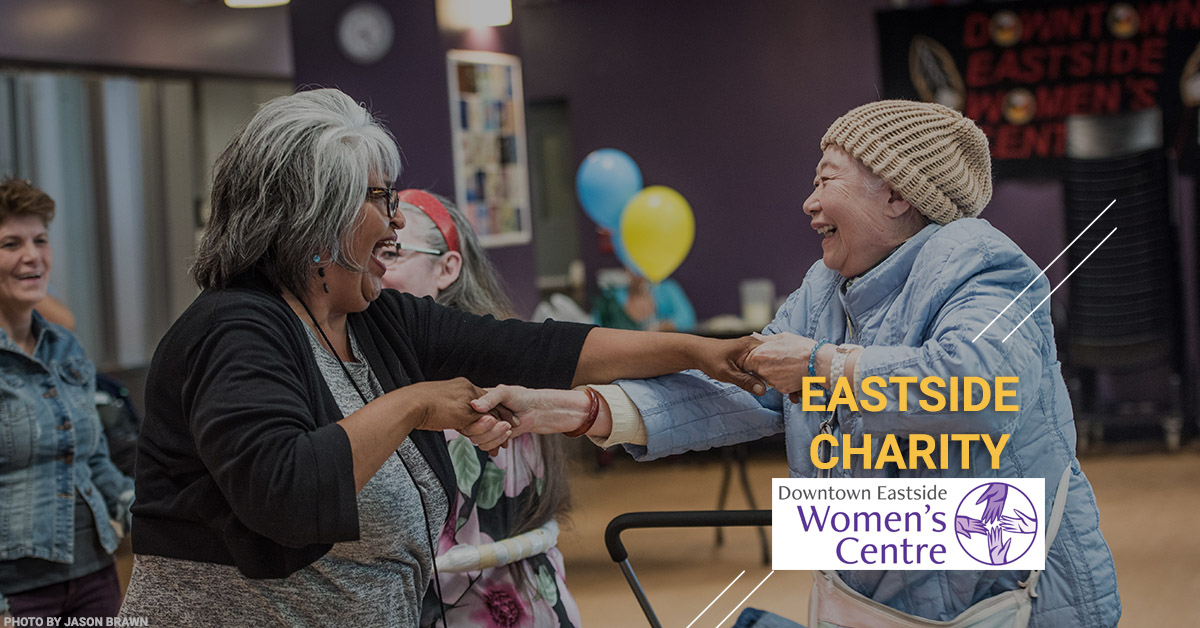




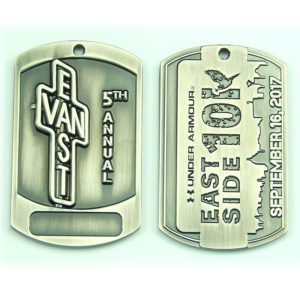
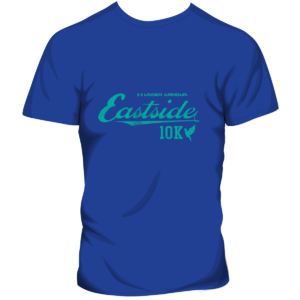
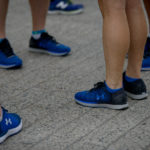
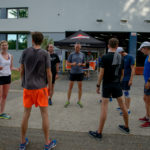



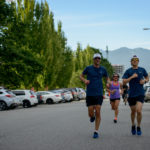
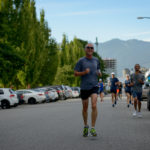
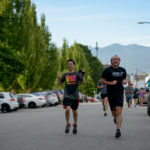
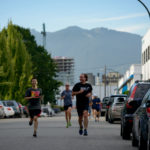
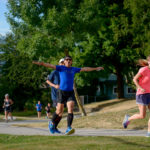
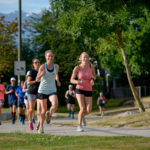
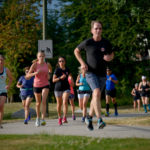


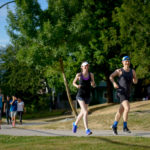

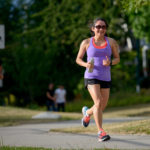
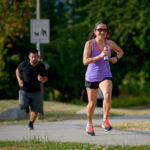
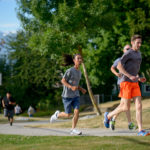


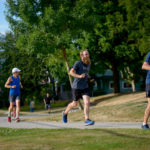

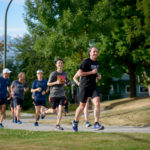
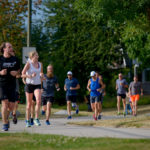

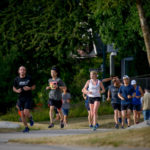



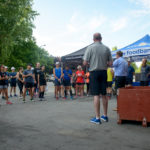


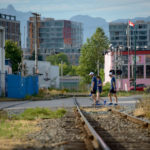
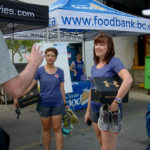
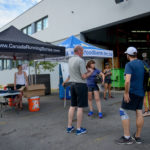

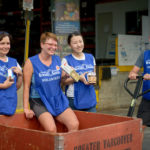
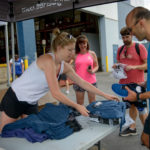
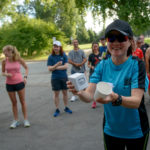
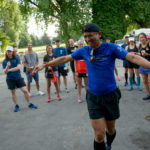


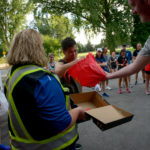


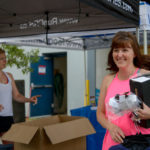
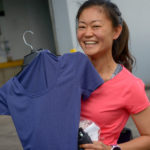
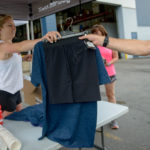
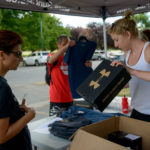
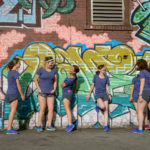
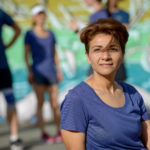
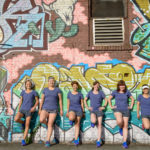
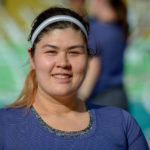



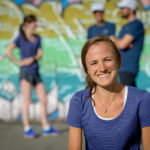
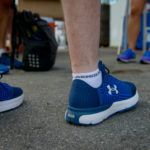

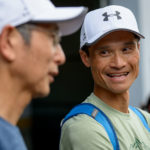
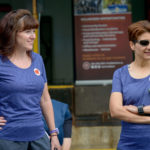
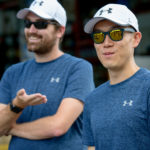
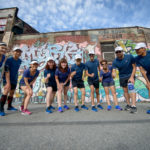
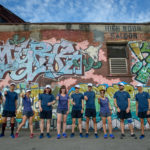

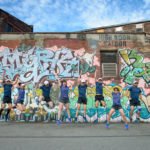
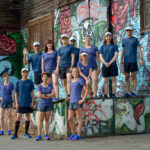

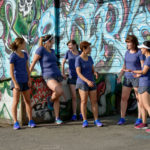


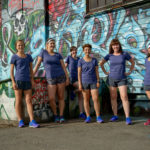


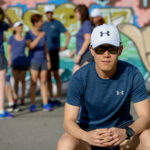
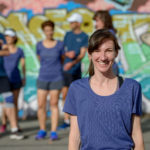
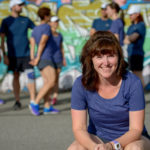
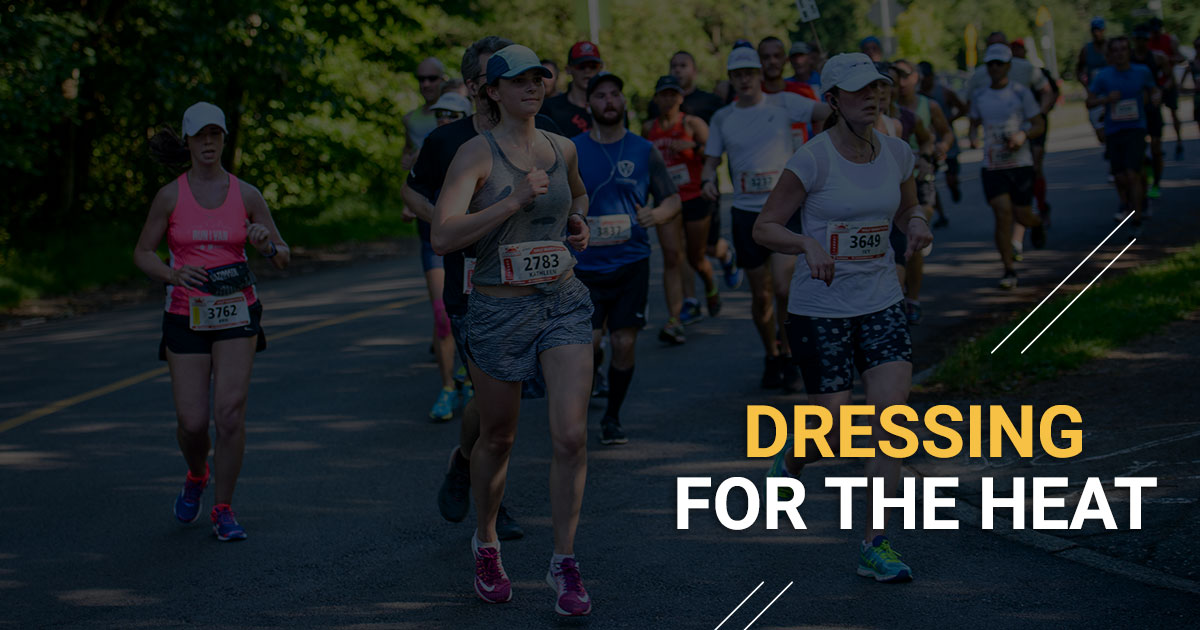
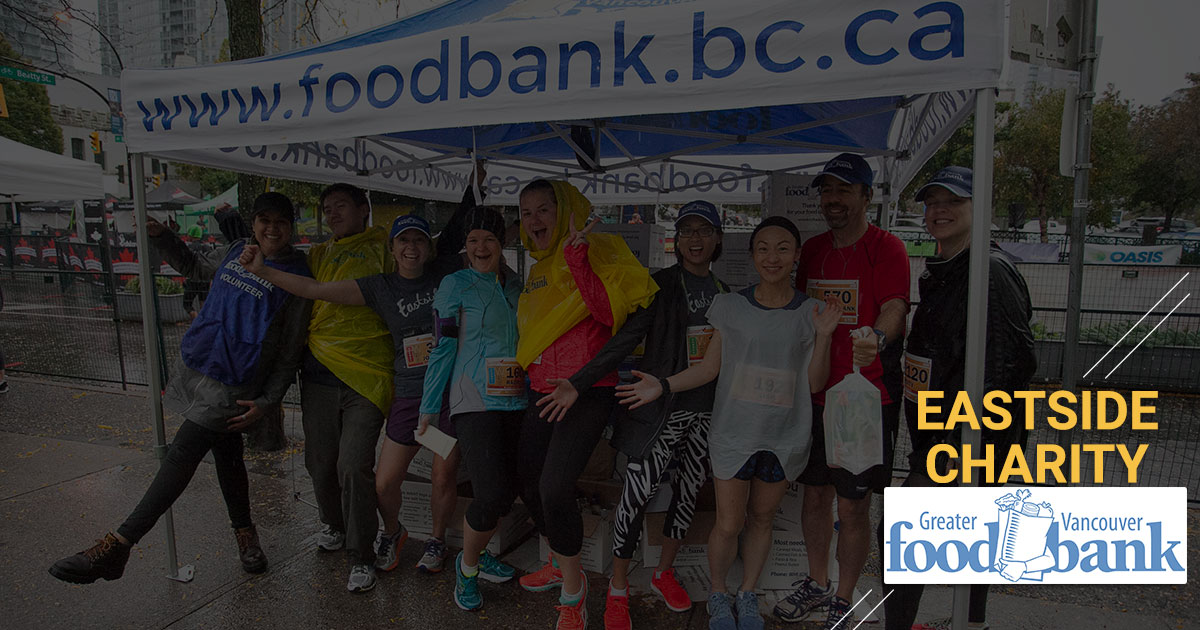
 It’s 5:30 a.m. Every Tuesday morning, Kat Perrara hops out of bed eager to see her friends at the Greater Vancouver Food Bank’s Southside Depot.
It’s 5:30 a.m. Every Tuesday morning, Kat Perrara hops out of bed eager to see her friends at the Greater Vancouver Food Bank’s Southside Depot.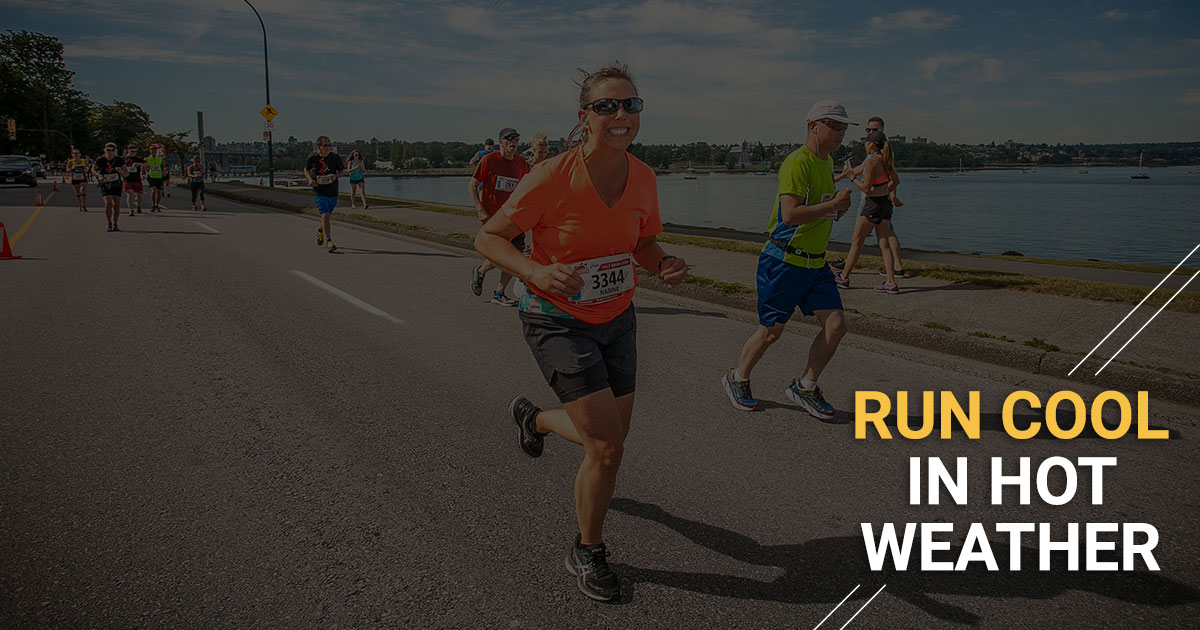

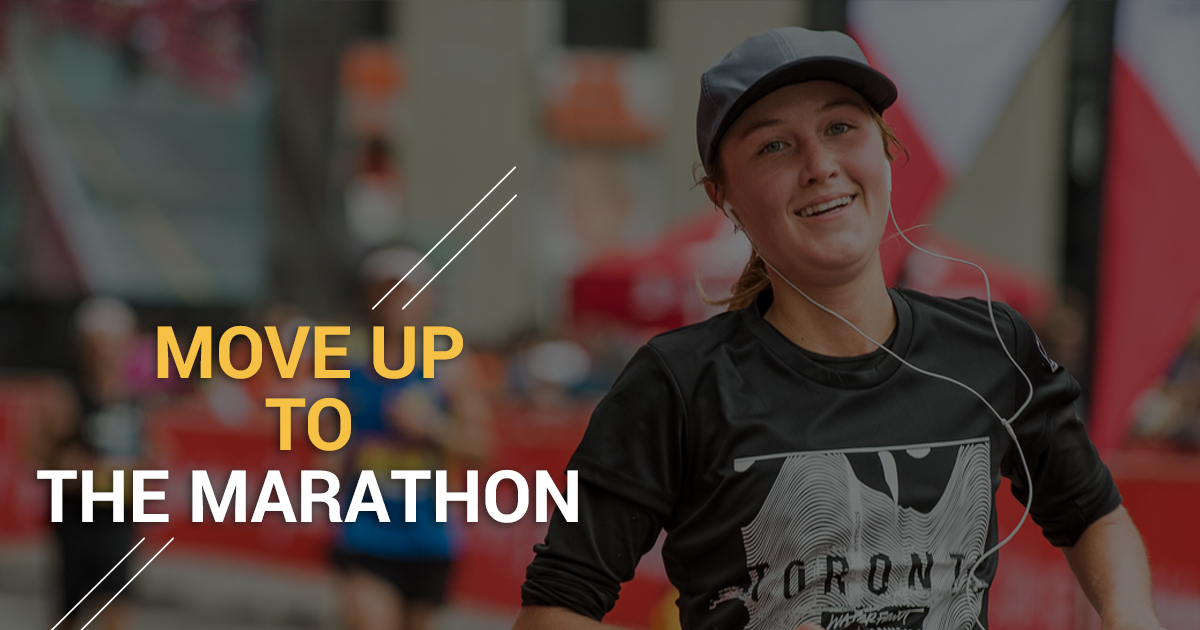
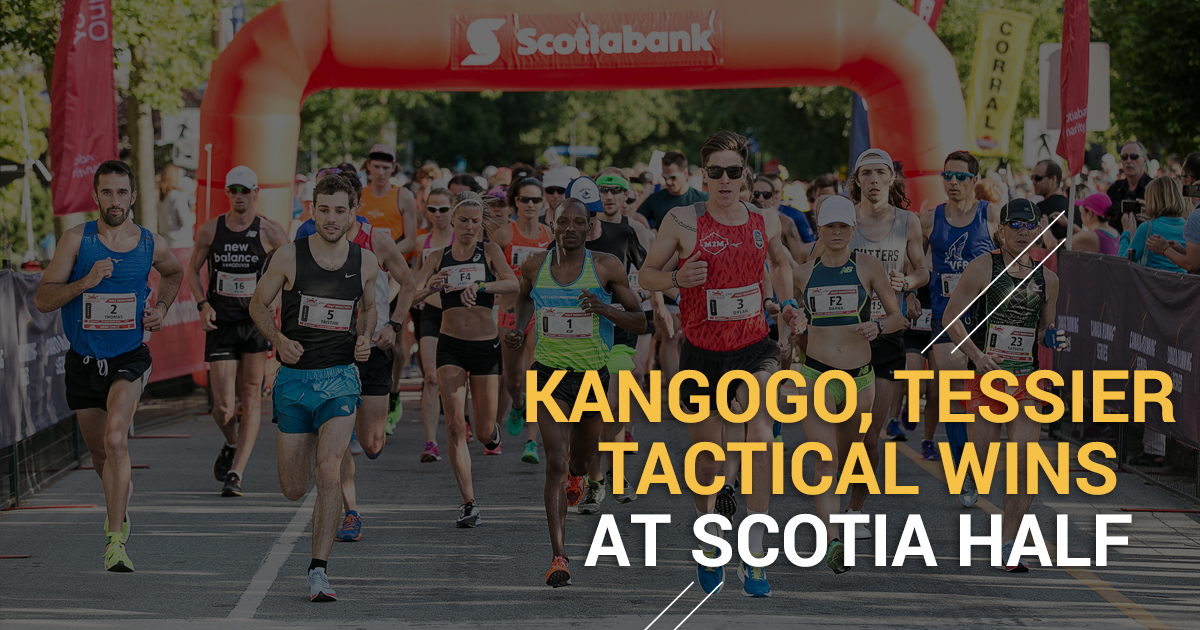
 The summerlike conditions showed one of the world’s most-scenic half marathons at its best, but led to tactical races up front. It was 19c for the 7:30am start of the “Scotia Half” start at the University of British Columbia at 7:30am. A group of 4 immediately broke away from the field, led by Canada’s 2012 Olympic marathoner Dylan Wykes, with Kangogo, Lakefield, Ontario’s Thomas Toth and Tristan Woodfine from Guelph’s Speed River TFC tucked in behind. Two initial three-minute kilometres got rid of Woodfine who drifted back on tired legs, and the pace slowed to consistent 3:10s as Wykes kept things moving along. Toth, who had already put in over 200 kilometres this week as he prepares to represent Canada in the IAAF World Championships marathon in London in August, was gone by 8k (24:51). It then turned into a thoroughly absorbing cat and mouse contest between two wily veterans. Kangogo had already won the event an impressive 5 times, Wykes once in 2014 (with Kangogo 2nd). The pair continued down through Spanish Banks, Jericho Beach, Point Grey and into Kitsilano with Wykes doing all the leading, and Kangogo in his footsteps behind. 10k was passed in 30:47 and 15k in 46:33 before Kangogo moved out to test Wykes’ race fitness around Kits Point at 17k. At 18k, going onto the challenging uphill over Burrard Bridge, the Albertan made his signature, decisive move that has given him so many victories on the course and it was over quickly. “My training has been coming along really nicely,” Kangogo said. “I was happy with my preparation and I planned to make my move at 18k on the bridge. I had won the Canadian Half marathon Championships 3 weeks ago in Calgary and I was ready. I love this race and am glad to come back anytime.” Despite dropping off to finish 18 seconds back (65:53) Wykes was also pleased with his performance. After battling injuries for 4 years and starting a family, he ran a steady, controlled effort. “It’s great to be back racing,” he said. “Right now I’ve still only got one gear, but watch out for me in the Fall!” Toth crossed the line a distant third in 68:02, with Woodfine another minute back (69:03).
The summerlike conditions showed one of the world’s most-scenic half marathons at its best, but led to tactical races up front. It was 19c for the 7:30am start of the “Scotia Half” start at the University of British Columbia at 7:30am. A group of 4 immediately broke away from the field, led by Canada’s 2012 Olympic marathoner Dylan Wykes, with Kangogo, Lakefield, Ontario’s Thomas Toth and Tristan Woodfine from Guelph’s Speed River TFC tucked in behind. Two initial three-minute kilometres got rid of Woodfine who drifted back on tired legs, and the pace slowed to consistent 3:10s as Wykes kept things moving along. Toth, who had already put in over 200 kilometres this week as he prepares to represent Canada in the IAAF World Championships marathon in London in August, was gone by 8k (24:51). It then turned into a thoroughly absorbing cat and mouse contest between two wily veterans. Kangogo had already won the event an impressive 5 times, Wykes once in 2014 (with Kangogo 2nd). The pair continued down through Spanish Banks, Jericho Beach, Point Grey and into Kitsilano with Wykes doing all the leading, and Kangogo in his footsteps behind. 10k was passed in 30:47 and 15k in 46:33 before Kangogo moved out to test Wykes’ race fitness around Kits Point at 17k. At 18k, going onto the challenging uphill over Burrard Bridge, the Albertan made his signature, decisive move that has given him so many victories on the course and it was over quickly. “My training has been coming along really nicely,” Kangogo said. “I was happy with my preparation and I planned to make my move at 18k on the bridge. I had won the Canadian Half marathon Championships 3 weeks ago in Calgary and I was ready. I love this race and am glad to come back anytime.” Despite dropping off to finish 18 seconds back (65:53) Wykes was also pleased with his performance. After battling injuries for 4 years and starting a family, he ran a steady, controlled effort. “It’s great to be back racing,” he said. “Right now I’ve still only got one gear, but watch out for me in the Fall!” Toth crossed the line a distant third in 68:02, with Woodfine another minute back (69:03).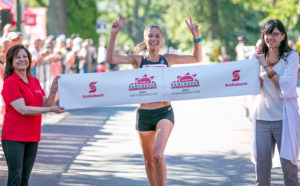 The women’s race produced a surprise winner in Lyndsay Tessier from Toronto’s Black Lungs club, ahead of strong pre-race favourite Dayna Pidhoresky (78:10) of Vancouver. Pidhoresky was coming off a breakthrough performance at the Scotiabank Ottawa Marathon just 4 weeks ago – a PB of 2:36:08 that also earned her a place on the Canadian team to the World Championships. “It was tough out there,” she said. “It was hot. The plan was to do a tempo workout and I thought that might be good enough to win today, but it wasn’t. Lyndsay really deserved to win. I’ve only had a couple of workouts since Ottawa, and I was worried if I pushed too hard it might set me back, and I’d miss some important training for London.” Pidhoresky got off to her typical quick start and was well clear at 3k which she passed in 10:02. But Tessier remained steady, gradually hauling her in. Tessier caught up around 8k, and the pair battled back and forth until 13k when Tessier made the move, to eventually win by over a minute. “Early on I just tried to keep the green shorts in sight,” said Tessier. “I’m not good on downhills, and Dayna got away from me on the downhill from 8k to 9k, but I caught up to her again by 10k. I do much better on the uphills and I moved away on the rise from Jericho at 13k. Burrard Street bridge was really a throat punch at the end but once I got over it I just held on.” Washington State’s Courtney Olsen was 3rd in 80:47.
The women’s race produced a surprise winner in Lyndsay Tessier from Toronto’s Black Lungs club, ahead of strong pre-race favourite Dayna Pidhoresky (78:10) of Vancouver. Pidhoresky was coming off a breakthrough performance at the Scotiabank Ottawa Marathon just 4 weeks ago – a PB of 2:36:08 that also earned her a place on the Canadian team to the World Championships. “It was tough out there,” she said. “It was hot. The plan was to do a tempo workout and I thought that might be good enough to win today, but it wasn’t. Lyndsay really deserved to win. I’ve only had a couple of workouts since Ottawa, and I was worried if I pushed too hard it might set me back, and I’d miss some important training for London.” Pidhoresky got off to her typical quick start and was well clear at 3k which she passed in 10:02. But Tessier remained steady, gradually hauling her in. Tessier caught up around 8k, and the pair battled back and forth until 13k when Tessier made the move, to eventually win by over a minute. “Early on I just tried to keep the green shorts in sight,” said Tessier. “I’m not good on downhills, and Dayna got away from me on the downhill from 8k to 9k, but I caught up to her again by 10k. I do much better on the uphills and I moved away on the rise from Jericho at 13k. Burrard Street bridge was really a throat punch at the end but once I got over it I just held on.” Washington State’s Courtney Olsen was 3rd in 80:47.